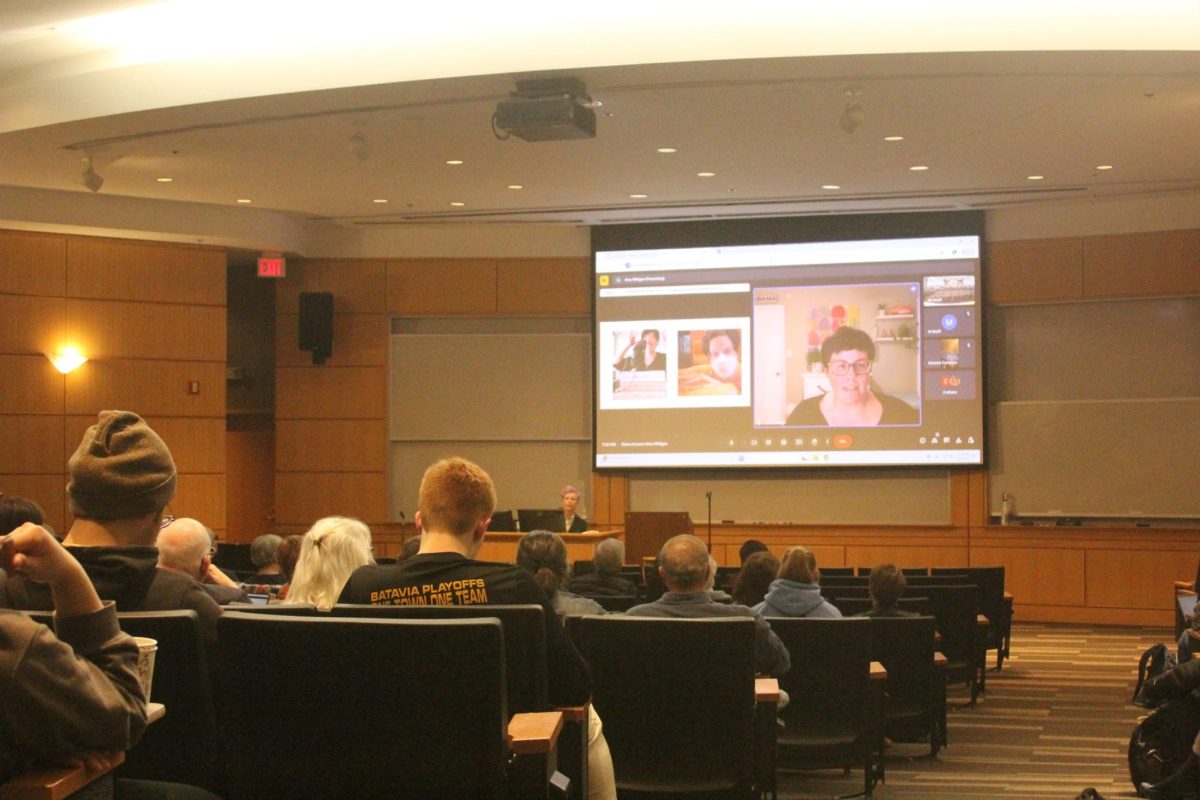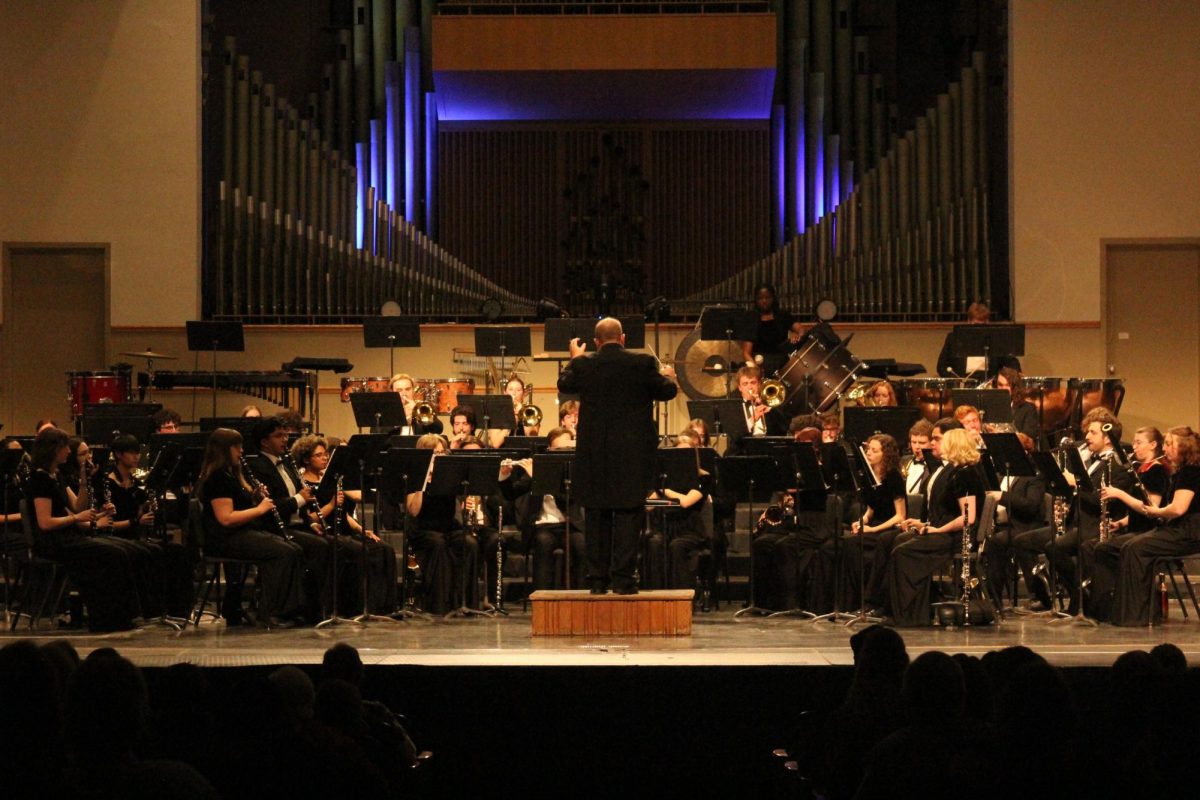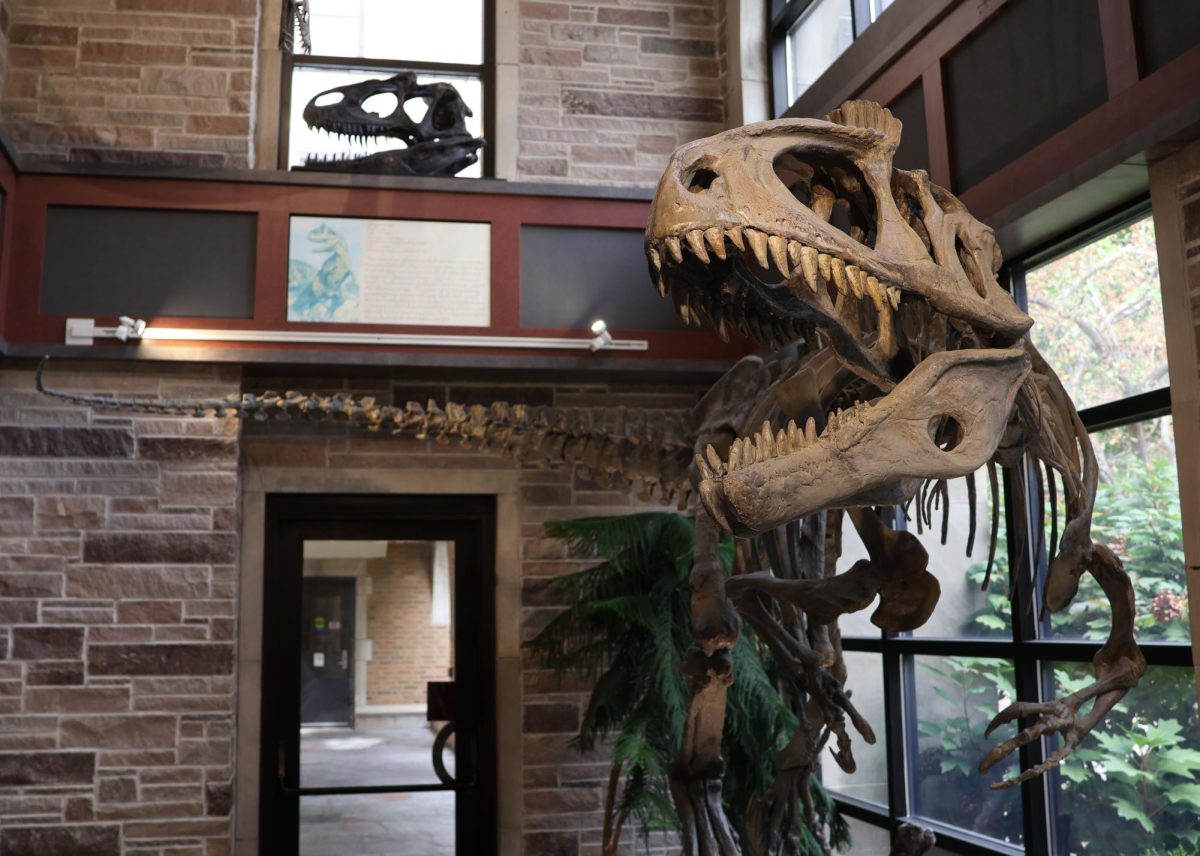Tucked away in the Swenson Hall of Geosciences, the Fryxell Geology Museum sits like a fossil waiting to be discovered. And, not unlike a fossil, the museum provides a remarkable look into Earth’s vibrant, ancient history. The museum is named in honor of Dr. Fritiof Fryxell, renowned professor of geology and alumnus of Augustana College, and houses an expansive collection of minerals, rocks and fossils. Founded by Fryxell in 1929 along with Augie’s geology department, the museum serves as a cornerstone of the department, where learning transcends textbooks and lectures.
For 27 years, Susan K. Wolf has served as the Fryxell Geology Museum’s assistant curator, witnessing its evolution and significance at Augustana College. From its founding, the museum has stood out as an institution dedicated to upholding science and asking important questions about the world.
“The museum and the geology department have a rich history,” Wolf said. “It’s fascinating to think that Augustana was progressive enough to establish a geology department during a time when the theory of evolution was controversial.”
As the fields of geology and paleontology became more vast and popular, the Fryxell Geology Museum grew right along with them. Today, with more than 20,000 specimens, the museum offers not only a glimpse into the Earth’s prehistoric past but also an opportunity for students, faculty and the general public to engage with Earth science in meaningful ways.
“We have an incredible variety of fossils, minerals and rocks on display, and students are always welcome to stop by on their way to class,” Wolf said.
The accessibility of the museum lends itself to quick visits, whether between classes or on weekends. Even so, the relatively small space can feel much larger on the inside. A 22-foot-long cast of Cryolophosaurus looms to the right of visitors as they walk in, impossible to ignore. The exhibit is not only massive in size but in its relevance to Augustana and the field of paleontology.
In 1991, Dr. William Hammer, a former professor of geology at Augustana, made a groundbreaking discovery during an Antarctic fossil dig—the first theropod (hollow-boned, three-toed dinosaur) discovered on the continent. Hammer himself was curator at the Fryxell Geology Museum until 2017.
“It was a major discovery, and we’re proud to display a cast of the skeleton here in the museum,” Wolf said. “The original bones are now housed at the Field Museum in Chicago.”
Other highlights include various skeletal casts of ancient reptiles and a blacklight-powered darkroom in which minerals glow. Despite the museum’s small footprint, casual visitors will find themselves drawn to something new each time they pay a visit. To students more involved in geology, the opportunities available through the museum are anything but undersized.
Ian Weible, a sophomore majoring in geology at Augustana, can attest to this. He currently serves as a teaching assistant for an introductory Geology 101 course and works at the museum.
“My job is to ensure everything is clean, unlocked and organized, and most importantly to engage visitors,” Weible said. “It is about connecting them to the exhibits regardless of their knowledge of geology.”
Augustana’s alumni network includes a host of successful geologists, museum curators and researchers who got their start at the museum. The college’s strong ties to other institutions around the world provide students with unparalleled opportunities to pursue internships, research and careers in the field of geology. For alumni like Makayla Palm (‘24), who now works as a project geologist, the opportunity to work at the museum was life-changing.
“I’ve learned so much about how museums work, from cataloging specimens to interacting with the public,” Palm said. “It’s given me a solid foundation for my career.”
Rather than being tied to the past, the Fryxell Geology Museum is actively invested in the future of students and of the science it makes accessible. Part of that investment is made through outreach programs, a cornerstone of the museum’s mission and operations. Each year, nearly 5,000 students from local schools visit the museum at no cost to participate in hands-on STEM activities and engage with its exhibits.
The museum has also made available ‘discovery kits’ which include sample items from the museum to be used in hands-on teaching at the museum and in schools. They can be borrowed free of charge and are even available to be used in homeschooling.
“These kits contain everything from hand samples of rocks and minerals to magnifying lenses and testing materials,” Wolf said. “Multiple times a year we take our museum samples and go to the libraries around the community.”
One of the museum’s most popular programs are its open houses which are put on in collaboration with the John Deere Planetarium. Several times a year, the museum and planetarium come together to allow visitors to explore both Earth and space in a single visit. The best part? These events are open to all Augustana students and free to the public.
“We have special open houses with hands-on exploration sessions and planet shows,” Wolf said.
In line with Fritiof Fryxell’s vision of an accessible and robust museum and department, these programs bring the often complex reality of Earth science within reach of the average person. For Augustana students, time spent talking with museum staff can be an engaging way to share in their knowledge and passion. Alumnus Cavit Schempp (‘24), who previously worked at the museum, said that he always felt compelled to explore.
“I loved every minute of it,” Schempp said. “It was interesting to walk around the museum, and it always seemed like there was something new, even though it was probably there last week.”
Whether it’s noticing a detail in a fossil you hadn’t seen before or learning something new about the minerals on display, the Fryxell Geology Museum offers an experience that evolves with each visit. Take a stroll through the museum’s mineral and insect collections and come face-to-face with a Tyrannosaurus Rex skull. Consider the knowledge of museum staff and curators when conducting research and, most importantly, give yourself the opportunity to be wowed by one of Augustana’s true hidden gems.




































































































